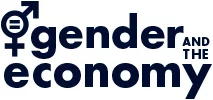Remember those “We are in this together” signs and hashtags when the COVID-19 pandemic first started? The message highlighted that everyone was at risk of catching the virus.
Now a year has passed. The evidence clearly shows that the pandemic impacts are not as equal as the catchphrase suggested. Women have made up the majority of job losses during lockdowns and their jobs have rebounded at a slower pace than men’s. The International Labour Organization warns that some of the “modest progress” that has been made in the past decades on gender equality around the world will disappear due to Covid-19. People of colour, parents, Indigenous Peoples and lower-income workers are also disproportionally affected. People identified with multiple groups have been hit particularly hard.
How did this happen? And what can we do about it?
Gender —and its intersections with race, indigeneity, and other overlapping identities — is embedded in everything. We might think we are designing policies, products and services that are gender neutral, but they end up having gendered effects, often disadvantaging, or excluding underrepresented groups. In a time of crisis, these gendered effects are magnified.
Organizations of all sizes and from all sectors are actively engaged in the effort to build back better. To do so, we need inclusive innovations—we must design work, business, and policies through an intersectional gender lens.
To this end, our team at the Institute for Gender and the Economy (GATE) at the University of Toronto’s Rotman School of Management developed Gender Analytics – a new approach to anticipate, understand, and use gender-based insights to uncover hidden possibilities for innovation and improved effectiveness. Think business analytics plus design thinking plus change leadership.
It is critical to recognize the ways intersectional dynamics shape the risks, opportunities and impacts of an organization’s activities and outcomes.
With support from Catalyst Inc. as well as CIBC, PwC, and the Government of Canada, we recently launched an online Gender Analytics program to help leaders and practitioners understand gender concepts and build inclusive techniques to analyze, innovate, and drive change.
Building Gender Analytics competencies is timely. From CEOs to middle managers, organizational leaders are looking for new ways to reopen safely, engage employees and customers remotely, and pivot activities in turbulent times. It is critical to recognize the ways intersectional dynamics shape the risks, opportunities and impacts of an organization’s activities and outcomes.
Using Gender Analytics will help organizations avoid downside risks and improve effectiveness. For instance, during the first lockdown in 2020, Toronto’s public transit saw systemwide ridership dropped roughly 70 percent. Still, busses travelling routes, which most essential workers in manufacturing, healthcare, and grocery retail relied upon, were almost always packed. Passengers found it impossible to follow social distancing on board. Both bus drivers and passengers reported feeling unsafe. Without an intersectional analysis of riders’ needs and travel patterns, Toronto’s public transit system failed to effectively manage demand changes and implement safety measures in the pandemic crisis.
Using Gender Analytics can identify growth opportunities. Leaders have used Gender Analytics to gain a competitive advantage or as a turnaround strategy. In our online course, Vanessa Serra Iarocci shares how she and her team staved off bankruptcy at McCarthy Uniforms and achieved double-digit revenue growth by identifying the gender gap in service delivery and product offerings and turning these insights into innovation opportunities.
Using Gender Analytics can build an inclusive workplace for people of all genders. Accessibility advocates have demanded remote work accommodations for years but were always told it was too expensive or infeasible. The pandemic not only proved it was feasible but also could benefit everyone by reducing the risk of COVID-19.
But working from home coupled with school and daycare closures has made the gendered impacts of work-life negotiations more pronounced. Women, especially mothers, are stressed, overworked, and leaving the workforce or reducing work hours at alarming rates. Men are also adapting to changing gendered norms, though there are fewer insights into how flexible work arrangements have impacted gender diverse people and LGBTQ families. Using a gender lens to understand how employees experience remote work differently will build empathy and trust with them and spot opportunities to create inclusive employee engagement and support programs.
The pandemic may be upending some progress on gender equality. At the same time, it has made room for leaders and organizations to blaze new paths. A gender-based approach to analyze and design business offerings, policies and organizational activities is a must-have for leaders daring to leap.
__________________________
Lechin Lu (MBA) is Project Lead for Gender Analytics. Sarah Kaplan is Distinguished Professor and Director, Institute for Gender and the Economy (GATE) at the University of Toronto’s Rotman School of Management





